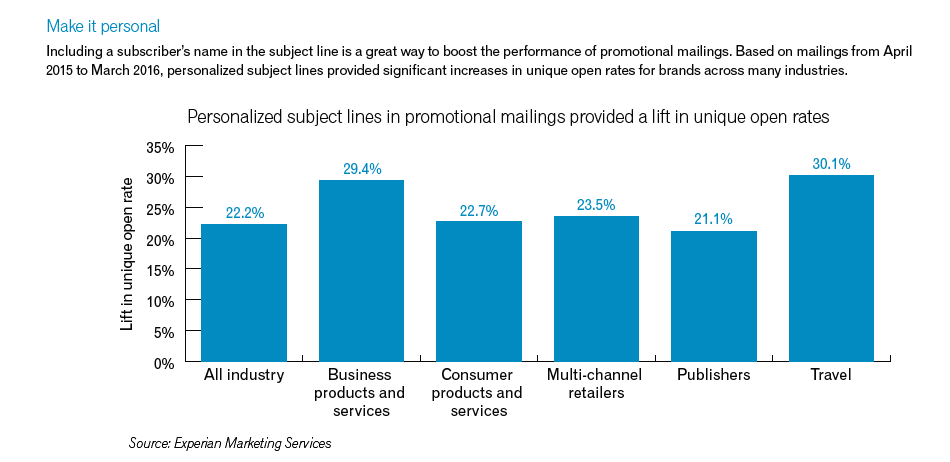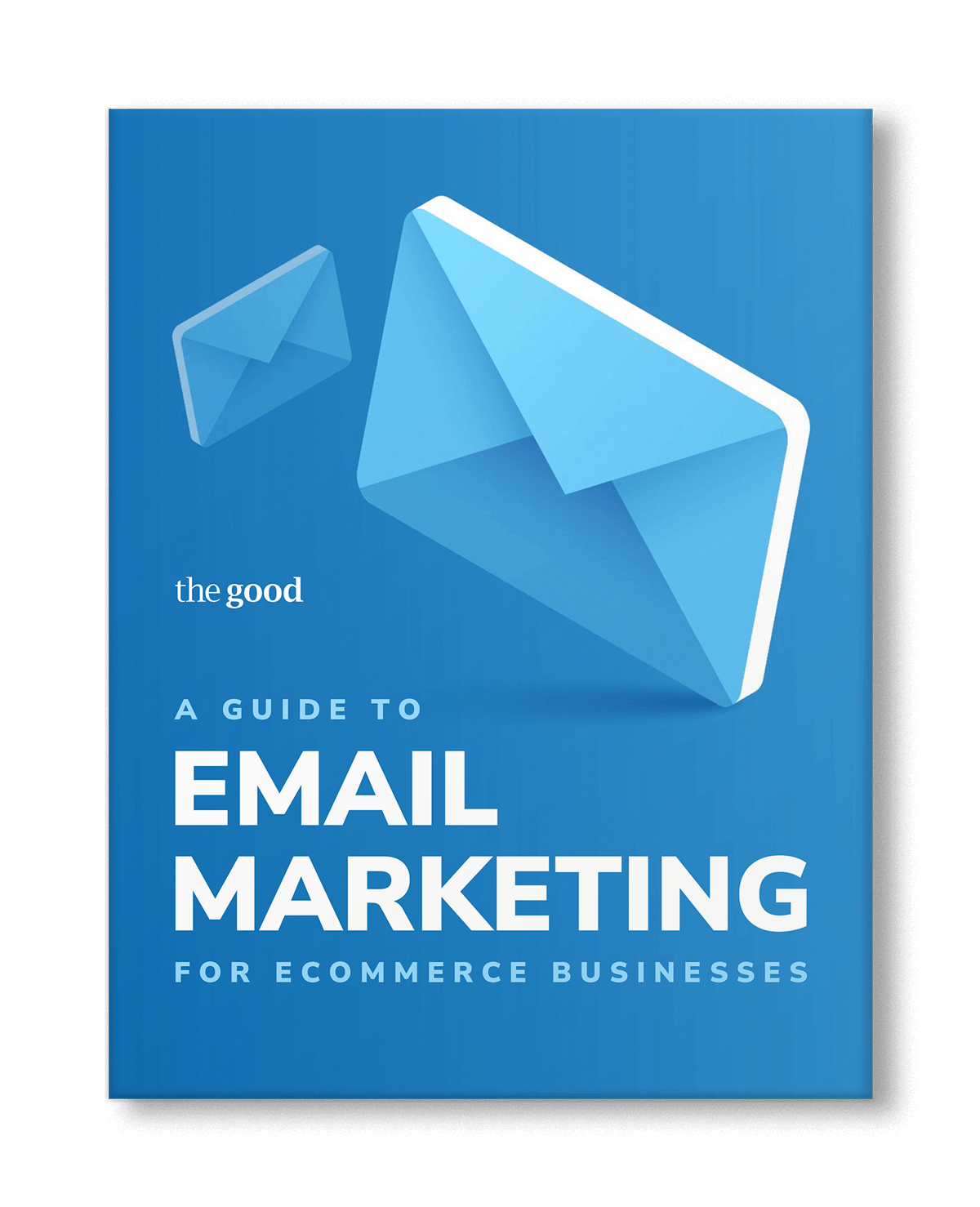
Email Marketing Best Practices: 15 Conversion-Centered Tips
These conversion focused tips can help you ramp up your company’s email marketing strategy and provide ideas worth millions to your bottom line.
Every ecommerce manager should consider these two points:
- Out of the approximately 4.5 billion people on the planet who live in households with access to electricity, about 3 billion (two-thirds of the total) use email.
- Email marketing done right provides an average ROI of 44:1.
Then ask and answer these two questions:
- How much weight does your marketing strategy place on email marketing?
- How much of your time is invested in learning and practicing email marketing best practices?
If you see even a little bit of a gap or disconnect between the potential of email marketing and your company’s current focus on email marketing, then we’ve really good news for you: in that gap lies great opportunity.
Let’s look at conversion rate optimization (CRO) best practices in general, then narrow down to look at conversion-centered best practices for email marketing.
A few minutes here can help you ramp up your company’s email marketing strategy and provide ideas worth millions to the bottom line.
Read, bookmark, share.
Two-thirds of the global population with access to electricity now uses email! Click To Tweet
Email Success is Built on CRO Best Practices
Fancy tactics can sometimes get the score, but fundamentals decide who wins. Whether you’re learning how to play the clarinet or you’re training for a black belt in karate, you’ll need to know and practice the basics of the art.
We’ll begin by listing five critical fundamentals for CRO. These apply to every part of your ecommerce business: your opt-in forms, your emails, your landing pages, your ecommerce website, your checkout procedure – to every customer-facing component of your digital business.
1. The primary goal of all marketing is to help prospects
Help them move from awareness to purchase to promotion and back again. Effective CRO clears the path and makes it easier for the prospect to take the next step.
2. Cohesiveness is like hot chocolate – it is comforting for the journey.
Every part of your marketing should relate to the other parts. Always make sure the prospect can readily identify your digital properties and promotions as belonging to and coming from you.
3. Talk to people, not to targets.
Personalize your messaging in both deed and mind. Trust comes before the sale.
4. Give more than you take.
Provide value to your audience.
5. Set goals, optimize to reach them, then test to determine results.
If you don’t have goals, you always hit the target.
A Guide to Email Marketing For Ecommerce Businesses

Email Marketing Best Practices for Conversion Optimization
The marketing path begins with awareness, then moves on through a series of steps leading to engagement, desire, and the conversion from prospect to customer.
But the sale isn’t the end of the trail; it’s the beginning. From there, your marketing efforts lead to repeat sales, bigger sales, referrals, and customer-generated promotion to build further awareness.
Remembering the essence of marketing – helping prospects take the next indicated step along the customer journey – let’s keep talking about CRO best practices, but now with an emphasis on email marketing.
6. The ‘Send To’ address is the first point of optimization.
The better you’ve identified your customer personas and segmented your mailing list to reach them, the more likely you’ll be pleased with the results.
7. Use the right kind of email for the purpose.
Use promotional emails for helping generate sales, but don’t make them the only tool in your email strategy. Use relational emails to build trust, ask for referrals, etc. But the most overlooked way to boost ROI with email is through transactional emails (thank you for opting into our mailing list, thank you for your order, here’s your shipping information, and such). By adding all three types of mail to your strategic plan, you’ll be better able to build a relationship and gain trust.
Leverage transactional emails for an 8X boost in ROI. Click To Tweet8. Vary your content and campaigns.
Just as you shouldn’t rely on promotional emails to carry your email marketing strategy, don’t make monetization campaigns your only email marketing aim. The best email marketing examples I’ve seen also create activation, engagement, segmentation, and re-engagement campaigns to help build and maintain a healthy mailing list.
9. Don’t be afraid to send email often.
You may hate getting marketing messages in your email inbox. Your friends may hate it. You’ll probably even get nasty notes from some of your customers telling you they hate it. But many other people love getting relative and appropriate messages from a brand they trust. They’re disappointed if they don’t hear from you often enough. Those people are your most productive audience. Email will move them towards a purchase. What should you do about the others? Take their contact information off your email list. Communicate with them via a different channel. If you’re not emailing your list at least once each week, you’re not fully leveraging the potential of email marketing. From time to time, make sure to do a quick rundown of your email list and verify if all email addresses are working in bulk. This trick will increase your deliverability tremendously!
10. Use broadcast and automation appropriately.
Broadcast emails typically go out to your entire list as a newsletter or special announcement. Automated response mail, however, is triggered by an action and normally gets sent to segments of your mailing list. It should be used to welcome new customers, provide purchase receipts, help segment your list, launch re-engagement efforts, and more. Explore the wonders of automation. Tie it to your personalization efforts. There’s much gold to mine in those activities.
THE DATA SAYS: By segmenting your email list and applying that information to your email campaign, you can get an average open rate over 14 percent higher.
11. Consider your ‘From’ field well.
This is an excellent topic for starting an argument in email marketing circles. Some say the From address should point to an individual person – that “people do business with other people, not with companies.” Many others disagree, pointing to the importance of building trust in the brand, not in one particular employee of the brand (even a well-known employee). You can even morph the two and use both a person’s name and the brand (Bill from Microsoft). Think this one over well, then be consistent. When you test From fields, make sure you look at each type of email separately. You may find, for instance, that promotional emails do better when From the company, but customer service transactional emails are better received when From an identified person and/or title.
12. The subject line must attract, but not mislead.
The subject line is to the email what the title is to a book. It has a profound influence on who is attracted to and opens the message. Use all the skills and tools you can muster to create compelling headlines, but always make sure the message, once opened, delivers on whatever is said in the Subject field. To promise one thing (Get 20 percent off NOW) and deliver another (sale starts next week, minimum $100 purchase) is a sure way to lose trust and give your audience an excellent reason to unsubscribe.
THE DATA SAYS: Personalize your promotional emails to get better click-through (27 percent higher) and open rates (11 percent higher).
13. Pay attention to the text preview.
The person receiving your email will likely see (depending on the email client and settings) who the message is from, the Subject, and a text preview showing the first part of the message. Those words can be the deciding factor on whether or not the email gets opened. NOTE: Most ecommerce managers use the terms ‘text preview’ and ‘preheader’ interchangeably. Your developer or resident email geek may argue there’s a difference. Direct Mail marketers know this part of the message as the ‘Johnson Box.’ Whatever you call it, use it like a subhead to provide more information about the Subject and to draw the right readers further into the message.

14. Make sure your emails appeal to the prospect, not to your staff.
There’s no tougher part of marketing than dropping your own preferences and prejudices to put yourself in the position and mindset of your intended audience. Hardly anyone on your staff will even try to do this. Most assume they already know what the prospect wants. In the end, your email campaign will be judged by the people it was sent to. If they open it and follow through on the call to action, it was a good email. If they don’t, it wasn’t. It’s that simple. Write for your buyers, not for your team. And make sure your design is mobile responsive. Most users first open mail via a mobile device.
15. Know the goal for every email you send.
Most of your messages should focus on one thing: getting the click. Don’t worry about getting the sale. Don’t worry about telling the story. Take prospects from where they are on the customer journey to the next step. Typically, that means the call to action in the email will get the prospect to click on a link that leads to a landing page. Every step is part of the journey. No step is all of the journey.
THE DATA SAYS: 56 percent of all email messages are first opened on a mobile device.
Now, It’s Your Turn – Email Marketing Best Practices Unleashed
You now have 15 email marketing fundamentals to consider. If any of them are lacking, hold back on anything fancier until the basic bases are covered. Most companies have yet to implement all 15. For you, that means more opportunity.
In the introduction and throughout this guide, you’ll see data points highlighting the value of email marketing to ecommerce. Few ecommerce managers dispute the numbers, but many still hold back on the implementation of a robust email strategy. They don’t want to ‘over-do’ email.
Trust me. You won’t. Most marketers aren’t even close to maxing out their email marketing potential.
Go over the 15 tips provided above. Compare the advice there to your current email marketing program, and make adjustments as needed. I don’t know of anything that can get a faster, bigger uptick for your ROI than conversion optimization.
And of all the types of CRO you can study, email optimization is the one most often overlooked.
Resources:
- How to Get More From Your Transactional Emails
- Bigger Profits Through Better Email – The Simple Way
- Post-Purchase Emails: A Powerful Way to Hack Growth
Enjoying this article?
Subscribe to our newsletter, Good Question, to get insights like this sent straight to your inbox every week.

About the Author
Don Sturgill
Don Sturgill helps small businesses compete online by combining the right content with effective email marketing. You can find him on Twitter at @donsturgill or on his website.